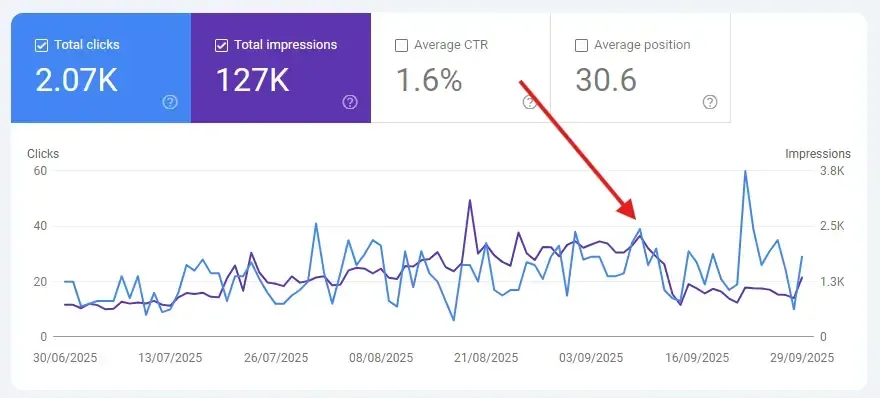Google update May 2022: fix those website woes
While 9th June 2022 most likely felt like any other day for many, for anyone with a website this date is significant. This is the date Google completed its May broad core update, which explains any recent volatile website metrics and/or a sudden dip or rise in website visitor numbers and/or ranking position in Google’s search engine you may have experienced.
If only there were definitive symptoms. If only there was a Google update survival handbook.
Following any Google update, the temptation is to try and identify one element of a website design or its content to tweak and restore it to the previous position; however, those days are gone. Updates are complex.
What to look for after a Google update
Investigative work and research are needed to identify how and where your website has been impacted. Look for changes on the position of your site is on the SERPs, but also in website traffic.
Here’s the clincher: review at page level.
You may find that some pages of your website gain more heat than others post-update.
Impression count is a sensitive metric, it measures how many time your website content was shown to an audience, so you can see any variations over a set period. By understanding the differences between the performing and non-performing pages you’ll gain clues as to what the update wants.
How long to wait before you to try to fix a loss in traffic after a Google update?
Google suggests allowing two weeks for things to settle. Typically, any impact will be felt within 3-4 days, but Google engineers make adjustments or reversals in the cooling off period which may affect your site again and return the lost traffic. So don’t panic and make big decisions about changing your website (unless you know you have breached Google’s Guidelines). Take time to understand where the changes have occurred.
How to approach fixing your website after a Google Update
Your first step is to make sure any existing website SEO mistakes are corrected so they don’t influence the results of the test.
To get your site out of the update doldrums, create a process to allow testing and monitoring. Here’s an example framework to work within:
1. Make a hypothesis e.g. I have too many affiliate links on my page
2. Create small scale testing of (a handful of pages)
3. Apply adjustments (record what changes you have made)
4. Reindex through the Google Console
5. Monitor and observe rates over two weeks
6. Evaluate traffic analytics, impressions, search ranking etc
7. Determine whether test was a success or failure
8. Roll out adjustments across batches of pages, monitor and track results. The idea behind changing batches of pages is so the scale of the test is steadily and correctly corrected, rather than going all out and changing the whole site.
If your website has slipped in the Google ranking position, or your visitor numbers have dropped of a cliff, do not despair, all is not lost.
Searchers have not disappeared.
People are still using Google to find information, products and services. Your website may have lost traffic, but another will have gained. We just need to get those searchers back to your website. A Google update is not a terminal condition for your website, think of it as a catalyst for improvement.
Digital Presence is a digital marketing agency in Christchurch NZ. We help small businesses navigate the digital landscape and provide jargon free support in their quest to be successful, sustainable and, most importantly, profitable. Contact us today to arrange a free no-obligation chat to see how we can help your business grow online.












